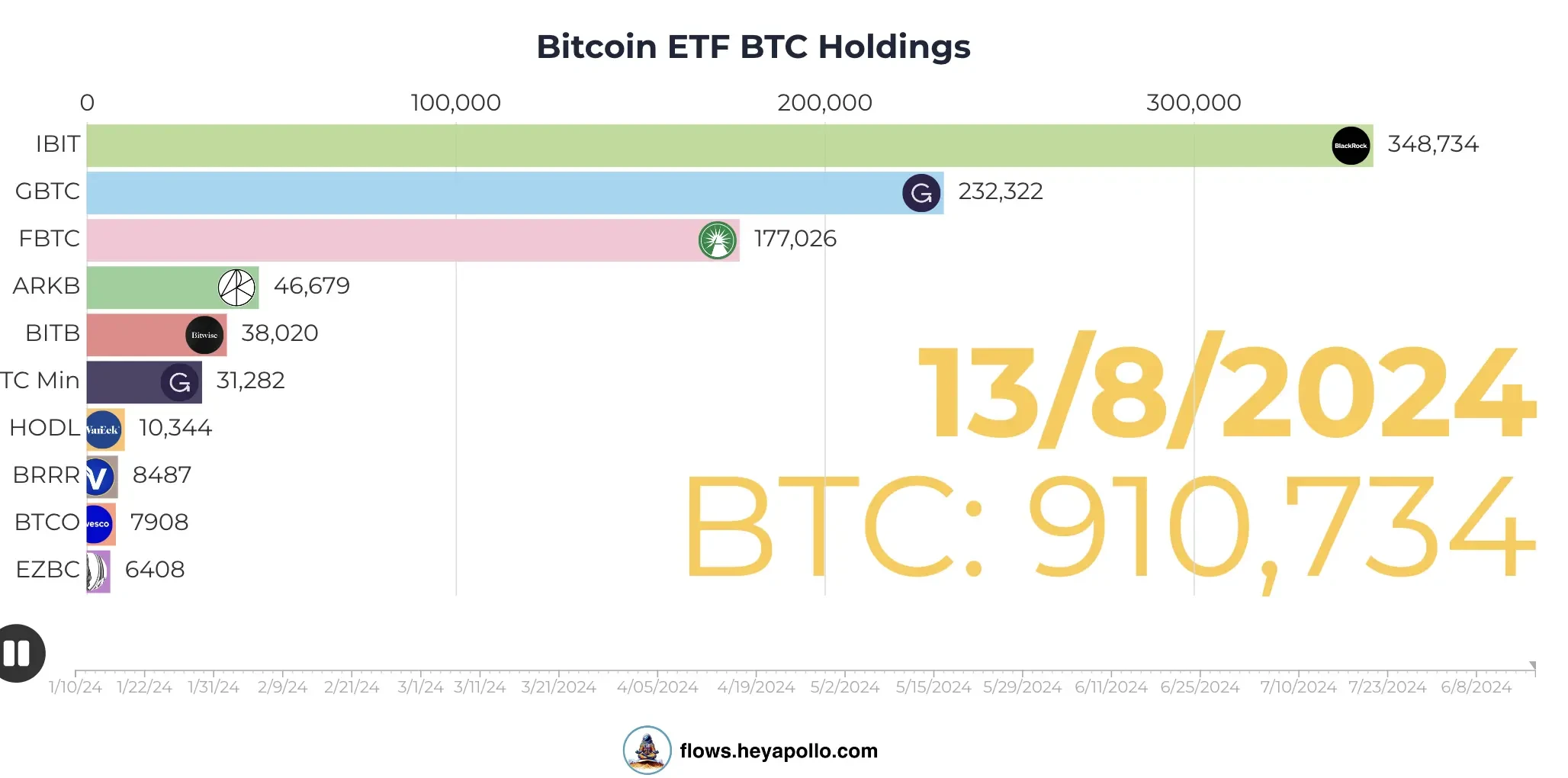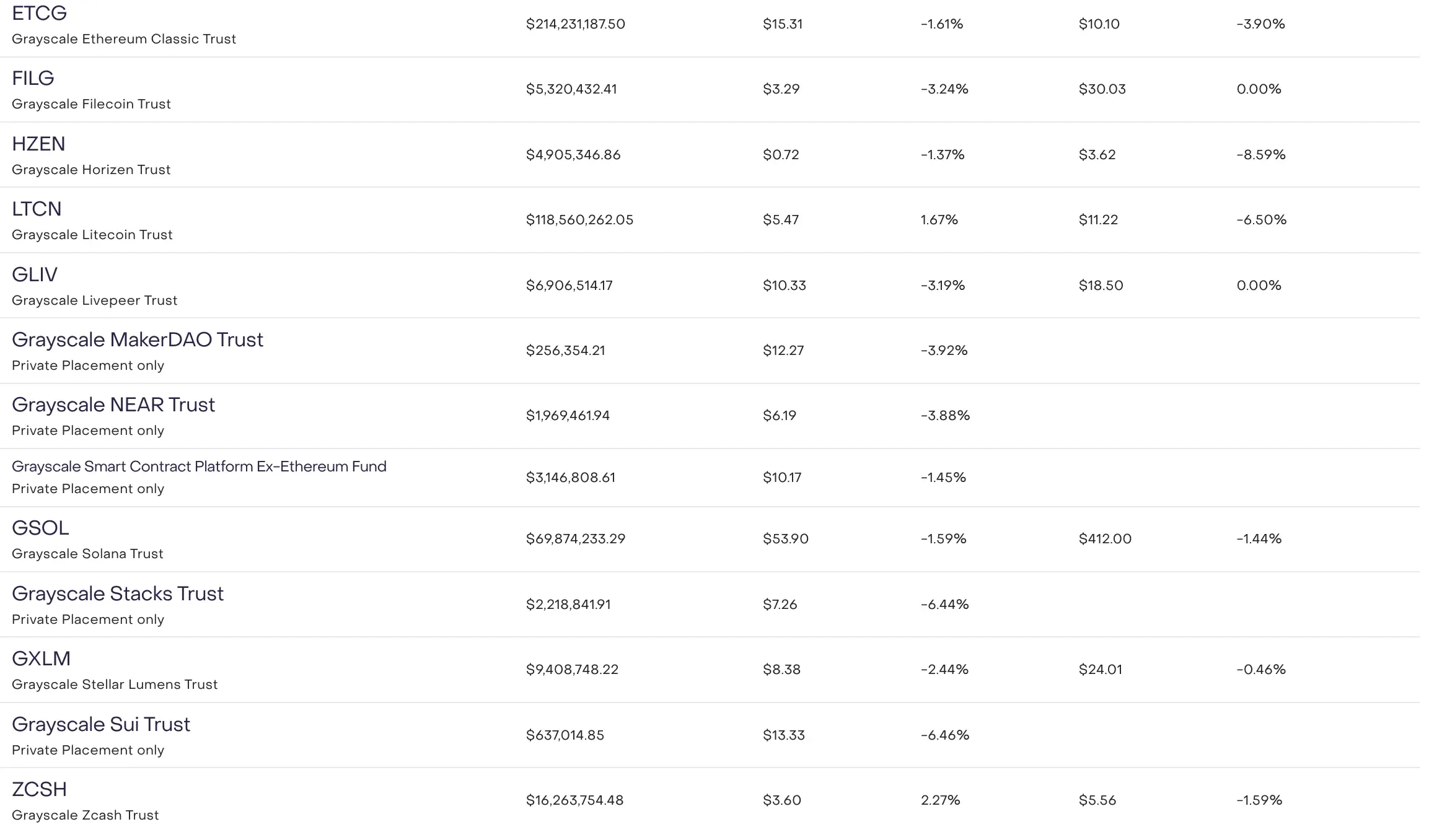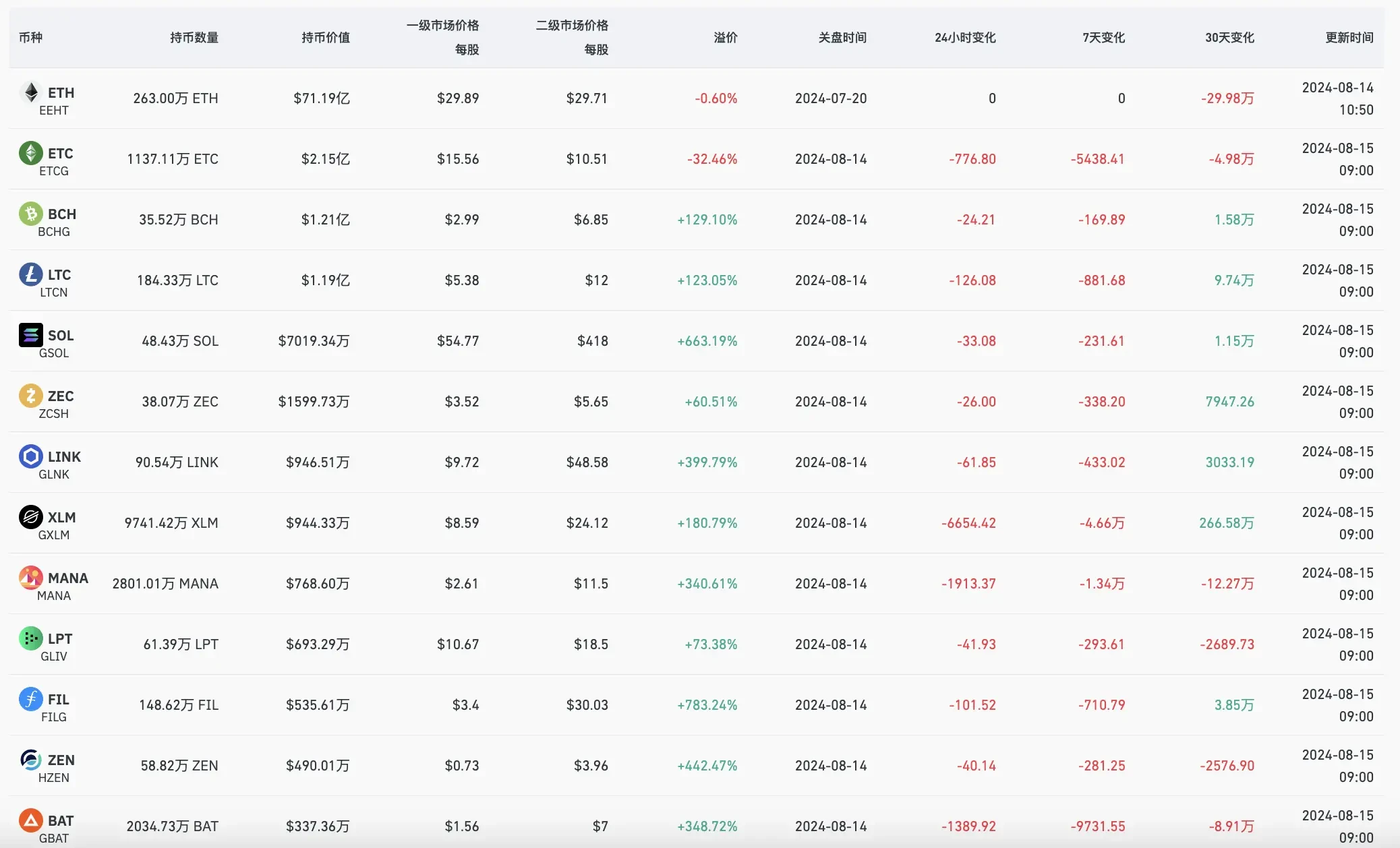Original author: Nianqing, ChainCatcher
Recently, Grayscale launched Grayscale MakerDAO Trust, a trust fund focused on MakerDAOs governance token MKR. After the announcement, MKR rose by more than 5% within an hour, breaking through $2,100, and rose by 14.7% in the past 7 days.
Last Wednesday, Grayscale also launched Grayscale Bittensor Trust and Grayscale Sui Trust. TAO and SUI tokens have been rising for nearly a week amid the overall turbulent market. The price of SUI has also exceeded $1, with a 7-day increase of more than 65%, and has been on the ChainCatcher project hot search list for several consecutive days.
In July, Grayscale also launched Grayscale Decentralized AI Fund, a fund that invests in a basket of decentralized artificial intelligence tokens, including TAO, FIL, LPT, NEAR and RNDR. After the news was released, the AI sector saw a general rise, and the tokens in Grayscales fund all saw an increase of more than 5% in a short period of time.
The long-lost grayscale effect.
As the former Bitcoin whale Pixiu, Grayscale has become the focus of the entire 암호화폐 market due to its massive hoarding of coins. There is even a view that the last round of bull market was the Grayscale bull, and the continuous hoarding of coins directly drove up the price of Bitcoin.
Grayscales glorious years lasted for two years. After experiencing the liquidity crisis caused by the serial explosions caused by the collapse of FTX in 2022-2023 and the tug-of-war with the US SEC over the conversion of GBTC into a spot ETF, Grayscales days now seem particularly peaceful.
After the launch of Bitcoin and Ethereum spot ETFs this year, Grayscale has significantly accelerated the launch of new funds . According to the product page on Grayscales official website, except for the new funds launched this year, almost all other products were established before 2022. For example, trusts related to other crypto investment products such as Solana, Litecoin, Stellar, Zcash, Chainlink, Decentralized, etc. In addition, Grayscale is also actively recruiting senior assistants for ETF products to support the growth and development of Grayscales ETF business.
What exactly does the listing of Bitcoin and Ethereum spot ETFs bring to Grayscale?
As an important promoter of the listing of Bitcoin spot ETF, Grayscale and GBTC have also ushered in a turnaround. However, as the worlds largest digital currency asset management company, after GBTC and ETHE, which account for the largest proportion of assets, are converted into ETFs, they are also facing challenges from other competitors, especially traditional asset management giants such as BlackRock and Fidelity.
Since GBTC was listed as an ETF in January, more than 380,000 BTC have been outflowed, and there are still 232,792 BTC. In contrast, BlackRock already holds 348,165 BTC, surpassing Grayscale as early as May, and Fidelity holds 176,656 BTC, ranking third.
In addition, according to the Grayscales GBTC and ETHE Returns (Estimated) data compiled by The Block, the revenue of Grayscales two funds hit a low during the bear market in 2022, and began to recover after winning the SEC lawsuit at the end of August 2023, but as GBTC and ETHE were converted into ETFs, revenue began to decline again.
Note: This chart estimates Grayscales total revenue from GBTC and ETHE. The calculation method is the total monthly USD holdings multiplied by Grayscales fees. GBTC charges an annual fee of 2% when it is a trust fund, which drops to 1.5% after becoming an ETF, and ETHEs annual fee is 2.5%.
This article will systematically sort out the development history of Grayscale and explore why Grayscale deserves our close attention.
Background and History
Grayscale was founded in 2013 by Barry Silbert.
Grayscale initially established only a Bitcoin trust, and determined the non-redeemable clause in 2014, and listed GBTC on the OTC market in 2015. After 2017, Grayscale began to diversify its products and launched crypto trusts such as Ethereum, Litecoin, ZCash, Solana, and Chainlink.
Barry Silbert started investing in Bitcoin in 2012 and invested in Coinbase, Bitpay, Ripple and other crypto giants in 2013. In addition, Barry Silbert also founded the prototype of Genesis Trading, a Bitcoin over-the-counter trading platform. In 2015, Barry Silbert integrated these two businesses with his personal investment business and established DCG (Digital Currency Group).
DCG has gradually developed into a company with asset management companies, mining companies, lending, and media (CoinDesk). Its subsidiaries include asset management company GrayScale, media, and mining company Foundry. DCG has also directly invested in more than 160 projects.
Grayscale effect
It is generally believed that this round of bull market is driven by institutions. In fact, as early as the last round, the high-profile entry of institutions has begun to take shape. In August 2020, MicroStrategy announced its entry into the Bitcoin market. The SEC and the audit department approved MicroStrategy to include Bitcoin in its balance sheet, which became an important indicator in the market (it is exactly four years away).
Driven by Tesla, MicroStrategy and other listed companies, more and more listed companies in North America are beginning to follow suit. Some traditional listed companies are beginning to turn to Bitcoin at the business level and asset reserve level.
However, the regulatory process for traditional institutions to hold crypto assets such as BTC is still relatively complicated, so the compliant crypto trust launched by Grayscale has begun to become an important channel for restricted institutional investors to buy assets such as BTC. It can be said that Grayscale directly introduced institutional investors to the growth momentum of BTC.
In the second half of 2020, Grayscale, which has been generous in buying BTC, began to attract attention. The number of new BTC added by Grayscale GBTC once accounted for 33% of the 100-day output, and tens of thousands of BTC were purchased in a week. Since there was only money in and no money out, When will Grayscale crash the market once became the Sword of Damocles in the currency circle. In addition, Grayscale has also become a market vane, and the new currency trusts it launches often drive up the prices of related currencies. Therefore, Grayscales purchases even have the currency listing effect like Coinbase and Binance.
The direct driving force behind the Grayscale effect lies in the existence of its premium (the market circulation value of each GBTC > the value of the embedded Bitcoin).
Since GBTC is one of the few regulated products in the United States, it was very popular among institutional investors at the time. Coupled with Grayscale Fund’s secondary market lock-up policy and the provision that assets cannot be redeemed in the primary market, the market must pay a certain risk premium to investors. Grayscale Fund’s premium rate was generally high at the time, with an average asset premium rate of 20%. Therefore, in addition to traditional institutions, Grayscale’s GBTC also attracted a large number of arbitrageurs.
Arbitrage Machine
At that time, the institutions with the largest GBTC holdings were lending company BlockFi, crypto hedge fund Three Arrows Capital, and Cathie Woods Ark Investments (AKR).
GBTC has become an important tool for many hedge funds to arbitrage because of its continued high premium. Moreover, large investors such as hedge funds have the ability to buy GBTC shares at a price lower than that of ordinary traders. Grayscale allows large investors to directly exchange BTC spot for GBTC shares.
As a result, these arbitrageurs bought BTC, deposited it in Grayscale, and dumped it to retail investors and institutions in the secondary market at a higher price after the GBTC unlocking period ended. In addition, Three Arrows Capital has long borrowed BTC at ultra-low interest rates without collateral and converted it into GBTC, which was then mortgaged to Genesis, a lending platform also belonging to DCG, to obtain liquidity.
During the peak of the 2020-2021 bull market, the value of GBTC shares exceeded the value of the underlying Bitcoin. But since the end of February 2021, GBTC has begun to show a negative premium. After the premium disappears, the Grayscale effect will immediately fail.
Subsequently, BlockFi and Three Arrows Capital went bankrupt and fell from grace. Grayscale’s GBTC also quickly turned from an accelerator of the bull market into a crusher during the bear market.
Affected by the series of scandals, the DCG Empire once faced the biggest crisis in history: Genesis announced bankruptcy and reorganization; Grayscale’s largest trust GBTC was discounted by more than 40%, and the SEC refused to approve the transformation into an ETF. Grayscale continued to try to make a tender offer for GBTC in the market and liquidate the fund; CoinDesk reported that it was sold for 200 million US dollars.
Spot ETF Core Promoter
In October 2021, under pressure from competitors applying for Bitcoin spot ETFs, Grayscale submitted an application to the SEC to convert its GBTC into a Bitcoin spot ETF. Subsequently, the decision was postponed several times by the SEC, and finally the application was rejected in June 2022, the deadline. At that time, Grayscale CEO Michael Sonnenshein immediately issued a statement saying that he would file a lawsuit with the SEC. In October of the same year, Grayscale officially submitted the lawsuit documents to the court.
In two statements, Grayscale accused the SEC of making a ruling that was “arbitrary, capricious,” and even “unfairly discriminating” between Bitcoin spot ETFs and futures ETFs.
Grayscale is facing its darkest moment at this time. If GBTC cannot be converted into a Bitcoin ETF, Grayscale will try to return part of the investor funds through methods such as a tender offer.
In January 2023, Grayscale filed its next litigation brief, again questioning the SECs decision to refuse to convert GBTC into a Bitcoin ETF.
At the end of August 2023, Grayscale won the lawsuit. The U.S. Federal Court of Appeals ruled to approve Grayscales request for review and revoke the SECs order, requiring the SEC to review Grayscales ETF request.
On August 29, the trading volume of Grayscale Bitcoin Trust (GBTC) hit a new high since June 2022, and GBTC stock price rose 18% to nearly $21 on the same day. Grayscales victory also brought a glimmer of hope to the entire decadent crypto market, and the price of Bitcoin also soared 7% to nearly $28,000. In addition, Grayscales victory in the lawsuit paved the way for ETF applications from giants such as BlackRock and Fidelity.
Accelerate layout
The release of US regulation has helped Grayscale turn the corner, but it has also introduced stronger competitors. As mentioned above, since January 11, GBTCs total net asset value has fallen to $13.87 billion, and the landscape of crypto asset management has changed dramatically due to the entry of traditional asset management companies. Grayscale has to make new arrangements and accelerate the launch of new products.
In the past three months, Grayscale has launched 6 new crypto trusts.
In addition to the new funds launched this year, almost all other products were established before 2022. For example, trusts related to other crypto investment products such as Solana, Litecoin, Stellar, Zcash, Chainlink, Decentralized, etc. In addition, Grayscale is also actively recruiting senior assistants for ETF products to support the growth and development of Grayscales ETF business.
According to Grayscales official website, Grayscale has launched 21 crypto trusts and 5 ETF products. According to Coinglass data, its total holdings are approximately US$21.35 billion. The trust management fee is generally 2.5%, and the fee rate for ETF products is between 0.15% and 2.5%.
In addition to BTC, here is a list of other assets held by Grayscale:
In addition, Grayscale is also considering international markets outside the United States. In April this year, Grayscale disclosed that it plans to expand its crypto fund products to Europe. The company is holding meetings with local partners to discuss how to launch the Grayscale product suite in Europe. When determining the launch of products, Grayscale will consider the impact of investor behavior and local regulations.
In general, the launch of the ETF has helped Grayscale, which was deeply affected by the FTX incident, to turn danger into safety, and has further promoted the entire crypto market. At the same time, for Grayscale, there is still room for improvement in its product rates, especially facing a number of powerful competitors, and there are more challenges. However, the recent rise in tokens such as MKR and SUI shows that the market is still willing to pay for the Grayscale effect.
This article is sourced from the internet: The Grayscale Effect reappears. What exactly did the listing of spot ETFs bring to Grayscale?
Headlines The US government marked the transfer of about 29,800 BTC, worth about $2.02 billion According to Arkham monitoring, the US government marked address transferred about 29,800 BTC related to Silk Road 7 minutes ago, with a value of approximately US$2.02 billion. BTC fell below 66,000 USDT, down 4.37% in 24 hours OKX market data shows that BTC fell below 66,000 USDT and is currently trading at 65,906.9 USDT, with a 24-hour drop of 4.37%. Elon Musk: I do think Bitcoin and some other cryptocurrencies are valuable Elon Musk participated in the X Takeover podcast hosted by Tesla owner Silicon Valley account on the X platform. When asked about his views on Bitcoin, Musk said that he does think Bitcoin and some other cryptocurrencies are valuable, and also admitted that…














